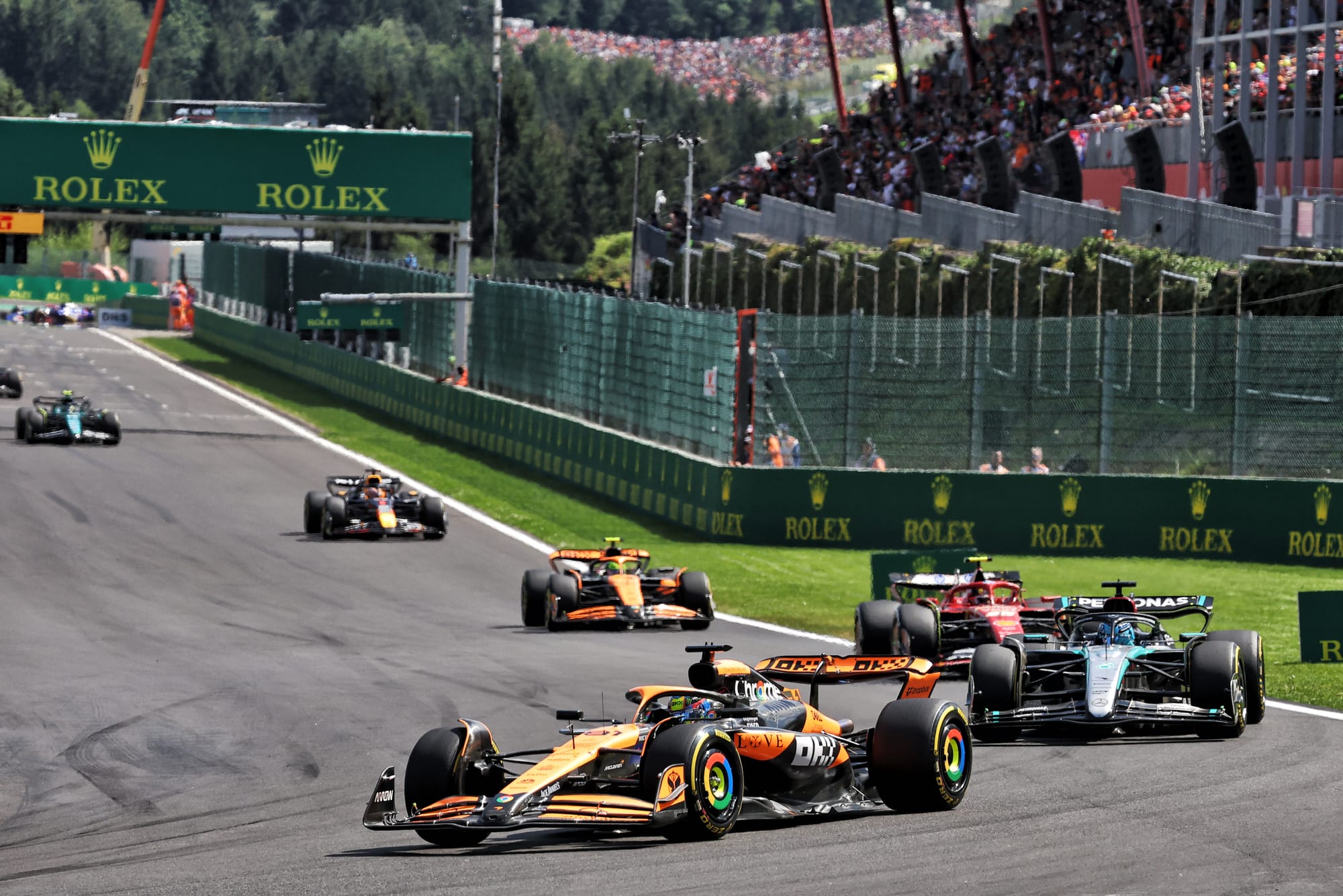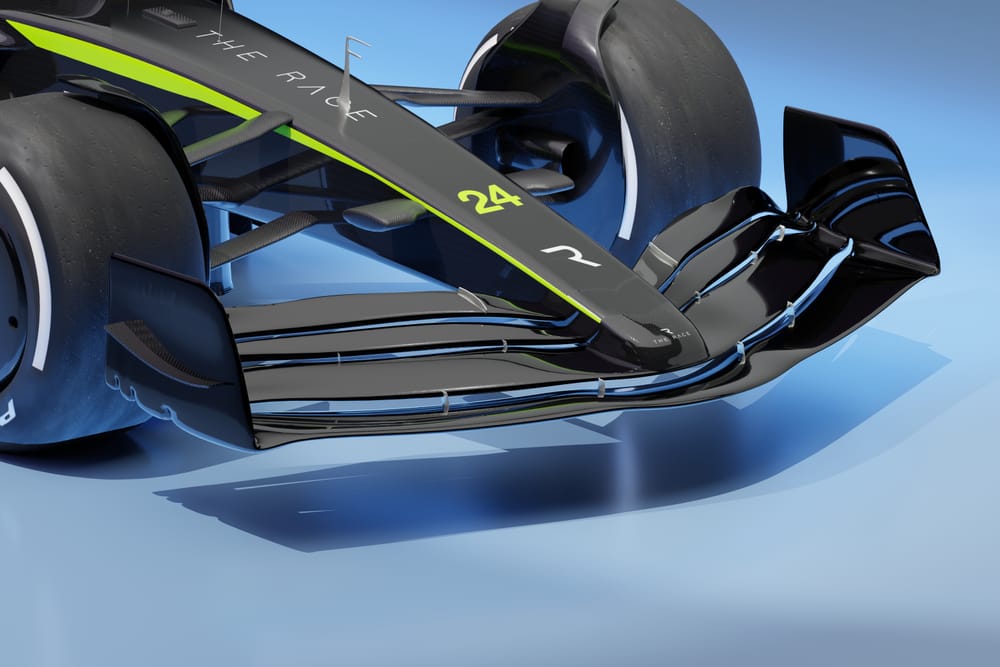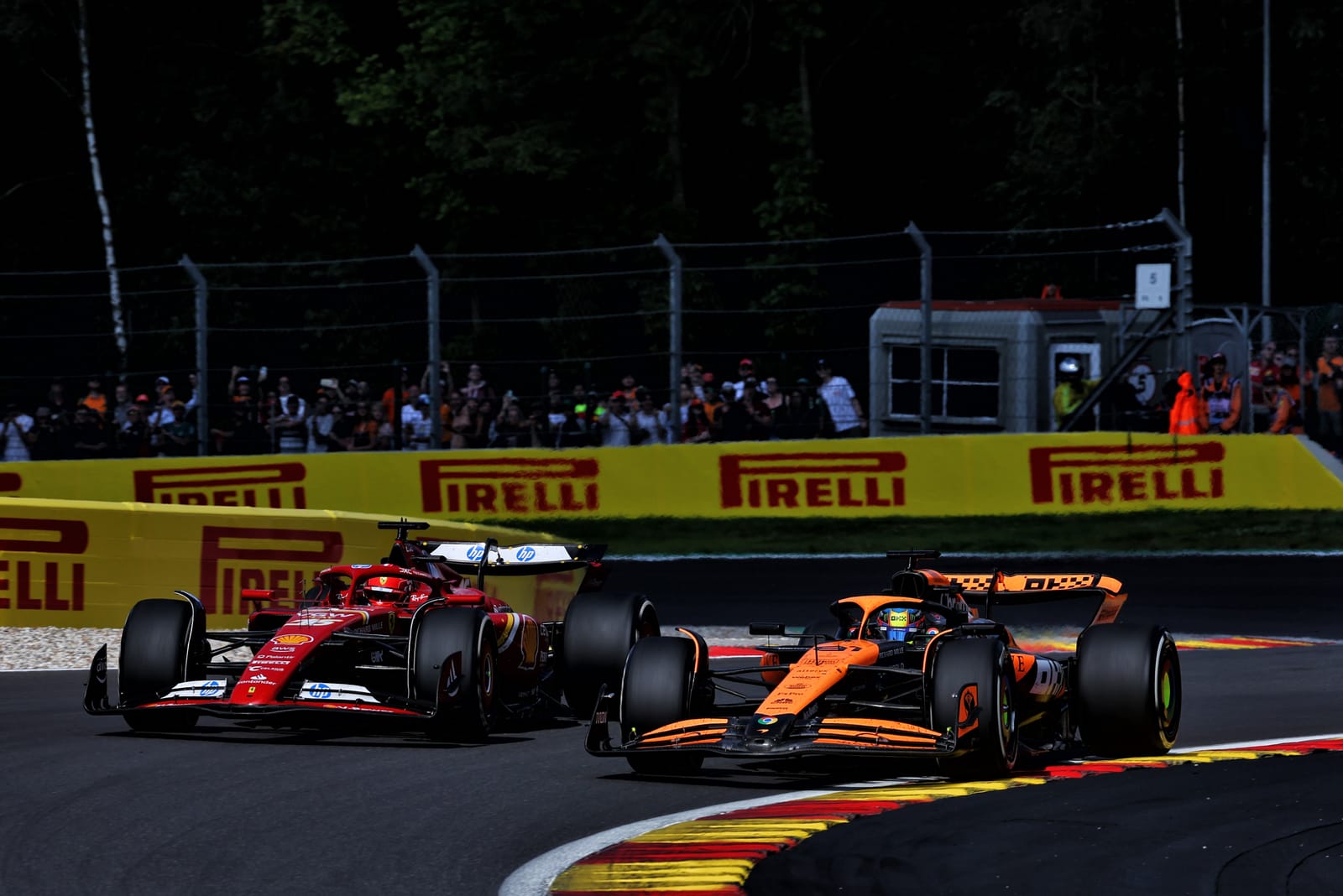Up Next

Questions about front wing flexibility are nothing new in Formula 1. This time, it’s Red Bull and Ferrari who want clarity on what is and isn’t allowed by the FIA, and the answer is seemingly that what McLaren and Mercedes are doing is considered perfectly legal.
While the FIA could potentially make some changes to the way the rule is policed next year, there are some basic shortcomings in the way front wings are tested that could be fixed immediately.
The benefits of flexibility in the front wing are clear, particularly under these regulations. The difficulty is getting the amount of flexing you need in a controlled way at the right speeds in order to get the aero centre of pressure shift you need.
With these ground effect rules and the limits that the FIA have put on the actual cars’ weight distribution making it difficult to achieve good balance across high and low-speed corners, it’s particularly important.
But it’s not just about flexing the whole wing, it’s about getting it to rotate. That’s where the load tests come in. While the regulations state that all bodywork has to be “rigid”, that’s not actually possible - as the FIA itself has acknowledged, which means there will be some degree of movement. This means the load tests are the way that legality is established, so teams design to pass those but have the flexibility (no pun intended) they need beyond that.
The regulations related to front wing flexibility tests are reproduced in full at the bottom of this article for your reference. In short, they set out that the load test is applied at a distance from the central line of the front axle forward, and from the car centre line outwards. So while there’s some flexibility in where this is applied it is only measuring deflection rather than rotation.
If the rules changed the position used, it would be possible to test deflection and rotation because it would expand the area that could be tested. It wouldn’t be difficult to do as the load would still be the same.

The location shown on the Red Bull highlighted in red is the most forward position from the front axle that these components can be placed.
The locations shown on the Ferrari highlighted in blue are the load positions, loads and maximum deflection.
The locations shown on the Mercedes highlighted in green are my proposals that should identify if any team was pushing the boundaries of wing deflection or wing rotation just that little bit too far.
The horizontal magenta line is what I would guess to be the mainplane length where it joins to the endplate. As you can see it is significantly longer than the Red Bull or Ferrari on both the Mercedes and the McLaren. If a team were able to rotate the mainplane and flaps it would be much more powerful than just rotating the flaps.

On the front views above, again in red on the Red Bull is the maximum wing width. On the McLaren is the lateral position of the pad that the team supplies highlighted in yellow with the load centre highlighted in blue.
All of these dimensions, other than the length of the pad, stay the same in my idea.
It wouldn’t require any additional equipment, except for teams needing to provide the pad for where the load is applied. The current test is inadequate and teams are working in the area that doesn't have a load applied in the present system but would under my revision.
You can see from the onboard nose cameras that McLaren and Mercedes are doing this and - given the way the rules are being applied and tested - that is perfectly legal so I don’t blame them.
But even if you look at the video, they aren’t doing it dramatically more than any other teams, it just appears to be with better control. And that plays a part in how well the car works because changing the aerodynamic load position (centre of pressure) with speed is very valuable.
So the FIA can change the regulations next year, but changing one number in the regulations relating to where the load test is applied would be an easy way to convince everyone that no teams are going too far. A simple change of a co-ordinate from the original -800 to -500 in rule 3.15.4 (plus related small adjustments to the rule wording around the size and permitted weight of the pad) would allow the FIA to apply the test load in a wider range of locations.
Doing this doesn’t necessarily mean anyone, including McLaren and Mercedes, have to change but it means the suspicions will have been addressed.

There is a proviso in the current regulations (highlighted in bold italics in 3.15.1 below) that allows the FIA to alter the load tests if they feel someone is operating outside of the intention of the regulation. If the FIA just wanted to put this to bed for this year it could simply carry out this test as I have defined and print the results for each team. That way it would resolve these allegations very quickly - or perhaps not, given teams will always be suspicious of those they are being beaten by.
Once it’s clear what is or isn’t allowed, it’s down to the other teams to match the centre of pressure control that McLaren and Mercedes have achieved. After all, every team does what it can to take advantage of the flexibility that there has to be in these components and sometimes it’s just down to making sure it is used in a positive manner.
FRONT WING FLEXIBILITY TESTS - THE RULES IN FULL + GARY'S SUGGESTED REVISIONS
3.15 Aerodynamic Component Flexibility
3.15.1 Introduction of load/deflection tests
In order to ensure that the requirements of Article 3.2.2 are respected, the FIA reserves the right to introduce further load/deflection tests on any part of the bodywork which appears to be (or is suspected of), moving whilst the car is in motion.
3.15.2 Load/deflection linearity
All load deflection tests must have a nominally linear elastic relationship unless otherwise stated.
3.15.3 Rear Wing Skins
The skins of the rear wing elements may deflect no more than 2mm when a 60N force is applied to the skin normal to and away from the element.
The force will be applied using a vacuum cup of 50mm diameter and the deflection will be measured at the outer diameter of the cup.
3.15.4 Front Wing Bodywork Flexibility
The flexibility of Front Wing Bodywork will be tested by applying a load of [0, 0, -1000]N at points [XF, Y, Z] = [-800, ±800, 250] or [-1000, ±800, 250].
My change: = [-500, ±800, 250] or [-1000, ±800, 250].
The load will be applied in a downward direction using a 50mm diameter ram on a rectangular adaptor measuring 350mm (650mm) in the X-direction and 150mm in the Y-direction. This adaptor must be supplied by the team and should:
a. Have a flat top surface without recesses.
b. Be fitted to the car so as to apply the full load to the bodywork at the test point and not to increase the rigidity of the parts being tested.
c. Be placed with the inner face 725mm from Y=0.
d. Be placed with its forward face at XF=-1100mm.
e. Be placed with its top face at Z=250
f. Have a mass of no more than 2kg (3kg)
The deflection will be measured relative to the survival cell and along the loading axis.
When the load is applied symmetrically to both sides of the car the vertical deflection must be no more than 15mm.
When the load is applied to only one side of the car the vertical deflection must be no more than 20mm.
3.15.5 Front Wing Flap Flexibility
Any part of the trailing edge of any front wing flap may deflect no more than 5mm, when measured along the loading axis, when a 60N point load is applied normal to the flap.




